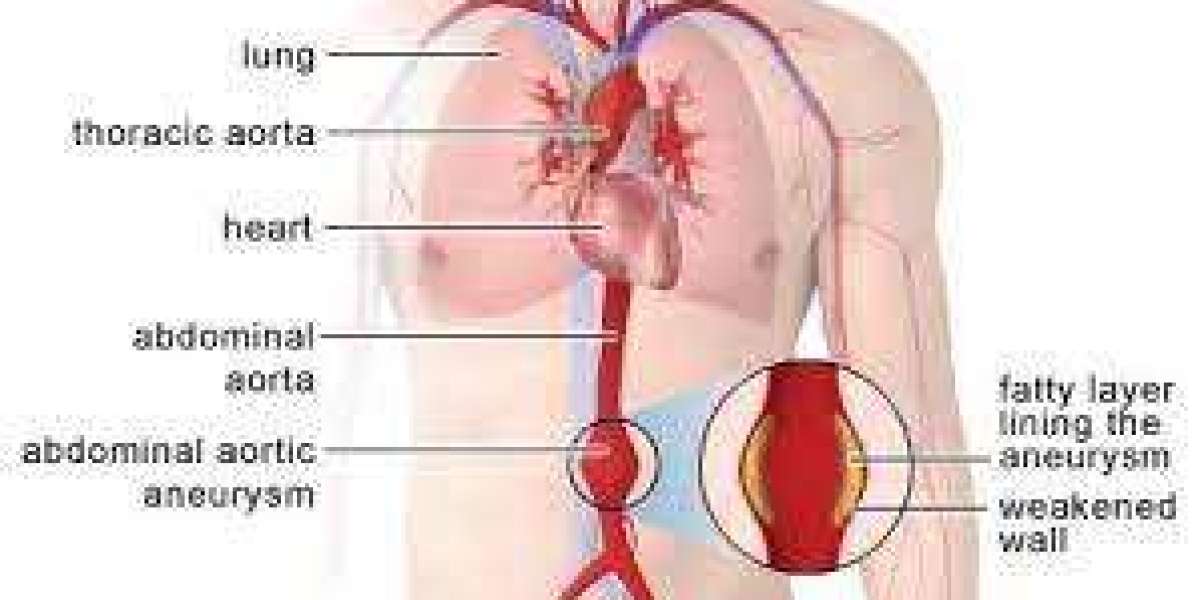The aorta, the body's largest artery, plays a vital role in delivering blood throughout the body. When a section of the abdominal aorta weakens and balloons outward, it forms an abdominal aortic aneurysm (AAA), a potentially life-threatening condition. This guide delves into understanding AAAs, their prevalence in India, and the treatment options available.
What is an Abdominal Aortic Aneurysm (AAA)?
An AAA occurs when the wall of the abdominal aorta weakens and expands, creating a bulge. This weakening can happen due to various factors, including:
- Atherosclerosis: Plaque buildup in the artery walls
- High blood pressure: Exerts additional pressure on the aorta
- Smoking: Damages blood vessel walls
- Family history: Genetic predisposition
The Scope of AAA in India:
While globally AAA prevalence varies, India faces a significant burden. Studies suggest a rising incidence, particularly among men over 50. This increased risk might be attributed to factors like:
- Lifestyle changes: Rising prevalence of smoking and unhealthy diets
- Improved life expectancy: More individuals reaching the age of increased risk
- Limited screening: Lack of widespread awareness and screening programs
Symptoms and Diagnosis:
AAAs often remain undetected as they rarely cause symptoms in their early stages. However, potential signs include:
- Dull, persistent pain in the abdomen or back
- Pulsating sensation in the abdomen
- Feeling a lump in the abdomen
Early diagnosis is crucial for timely treatment and improved outcomes. Diagnostic methods include:
- Ultrasound: Provides a non-invasive view of the aorta
- CT scan: Offers detailed images of the aneurysm and surrounding structures
- MRI scan: May be used for complex cases
Treatment Options in India:
Treatment for AAA depends on the size and growth rate of the aneurysm. It aims to prevent rupture, which can be fatal. The primary options in India include:
- Watchful waiting: Regular monitoring for smaller aneurysms with slow growth.
- Open surgical repair: Traditional approach involving replacing the weakened section with a synthetic graft.
- Endovascular aneurysm repair (EVAR): Minimally invasive technique using a stent graft inserted through a small incision in the groin.
Choosing the Right Treatment:
The choice of treatment depends on several factors, including:
- Size and growth rate of the AAA
- Overall health and medical history
- Surgeon's expertise and experience
Consulting a qualified vascular surgeon experienced in both open and minimally invasive techniques is crucial for personalized recommendations.
Recent Advancements in India:
The medical landscape in India is witnessing advancements in AAA treatment:
- Increased access to diagnostic tools: Improved availability of ultrasound and CT scans for early detection.
- Growing expertise in EVAR: More centers offering this minimally invasive approach.
- Development of newer technologies: Exploring stents specifically designed for complex AAA cases.
India's Healthcare System and Affordability:
The Indian healthcare system offers a combination of private and public facilities. Public hospitals provide subsidized treatment, while private hospitals offer advanced technology and wider access to EVAR. Understanding available options and insurance coverage is important for navigating costs.
Living with an AAA:
With early diagnosis and proper treatment, individuals with AAA can lead healthy lives. It's crucial to:
- Maintain a healthy lifestyle: Manage blood pressure, quit smoking, and adopt a healthy diet.
- Attend regular follow-up appointments: Monitor the aneurysm's growth and adjust treatment as needed.
- Manage stress and anxiety: Seek support from healthcare professionals and patient communities.
Empowering Yourself:
Knowledge is power. By understanding AAAs, their prevalence in India, and available treatment options, you can be proactive about your health and make informed decisions. Early detection and timely intervention are key to preventing complications and living a fulfilling life.



